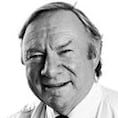“All human beings are born free and equal in dignity and rights. They are endowed with reason and conscience and should act towards one another in a spirit of brotherhood.”
This is Article 1 of the Universal Declaration of Human Rights (UDHR), adopted by the United Nations General Assembly in Paris on December 10th, 1948. Its 75th anniversary on Sunday prompts reflections on the declaration’s real historical role. Has it helped achieve the rights proclaimed in its 30 articles?
In summary, they begin with fundamental rights: to life, liberty and security of person; against slavery; to recognition, equality and remedy for people before the law; against arbitrary arrest and for a fair and public hearing; to be presumed innocent and against arbitrary interference with their reputation.
They go on to proclaim rights to: freedom of movement within and without states; seek asylum; have a nationality, marry, own and not be deprived of property. Freedoms of opinion, expression and assembly follow, including “to seek, receive and impart information and ideas through any media and regardless of frontiers”. Then come rights to take part in governing a country or be represented, with equal access to public services, and to vote in elections by secret ballot.
READ MORE
After that come rights to social security, work and join trade unions; to rest, leisure and holiday pay; to a certain standard of living and to social and health services – motherhood and childhood are entitled to special care and assistance. Education and access to a social and international order in which all these rights can be realised come next. The document rounds off with commitments to duties and responsibilities to respect the rights of others and to uphold the UDHR’s statement of rights.
The declaration was drafted by a pluralist group led by Eleanor Roosevelt. It passed the general assembly by 48, with eight abstaining and two not voting. It was later endorsed by many further UN votes and by the Non-Aligned Movement in 1955, reflecting the decolonisation then under way. This gave it worldwide legitimacy. But are the human rights it proclaims actually universal and how widespread are they in practice?
Human universality may be defined in time and space. Either approach raises deep philosophical questions about the actual application of human rights. Do they apply before being achieved and proclaimed historically, usually through big contestations, wars and struggles?
Geographically and developmentally, do they reflect liberal democratic rather than socialist or communist values? Do they express the achievements of richer, victorious and imperial peoples and states more than those who came later and were more prone to authoritarian rule? In short, are these rights more western than universal?
How does the declaration of these rights as universal square with cultural diversity, including of cultures that value hierarchical, communal and role-based societies over individualistic ones? American anthropologists invoked cultural relativism in 1948 to reject them, saying, “man is free only when he lives as his society defines freedom”. They modified this position in 1999, and in 2020 agreed that “human rights are inherent in human existence” and apply “regardless of race, gender, nationality, ethnicity, language, religion or any other status”.
That shift illustrates how difficult it is to agree on rights if they are set out ahistorically and without regard to their cultural specificity. Power should be factored in too, whether by postmodern theorists who link it to cultural relativity, or Marxists who say rights reflect dominant socio-economic group interests in a hierarchy of values that prioritises liberal individualism over social solidarity.
Yet it bears repeating that, after 75 years, the UDHR retains support in a far larger United Nations than the 1948 assembly which proclaimed it. Updating and reinterpreting the declaration to suit changed circumstances has involved the Chinese government in a series of initiatives on global development, security and civilisation. They stress the values of inclusiveness, exchange and mutual learning alongside rejection of western criticisms on the rights of Uyghurs in Xinjiang. They nonetheless adhere to the UDHR.
Human rights documents codify historical achievements, often after prolonged conflicts and struggles. They universalise them so they will endure. The German scholar Janne Mende argues convincingly that the criteria of dynamic pluralism, awareness of power and inequalities, contextual universalism, and open normativity help provide the basis for an emancipatory human rights regime.
The UDHR came after the second World War and its many millions of deaths and atrocities. The historicity on display in this case, and in most states’ founding moments, does not contradict universality but instead gives it context and purpose. That adds to the real purchase of human rights demands. They are enhanced, not weakened by the cultural dialogue and mutual learning that comes from taking such comparative history seriously.

















